-
 Bitcoin
Bitcoin $83,648.2009
1.02% -
 Ethereum
Ethereum $1,809.6283
-0.13% -
 Tether USDt
Tether USDt $0.9997
0.01% -
 XRP
XRP $2.1243
3.47% -
 BNB
BNB $596.8488
1.02% -
 Solana
Solana $122.2464
4.75% -
 USDC
USDC $0.9999
0.00% -
 Dogecoin
Dogecoin $0.1707
6.09% -
 Cardano
Cardano $0.6597
1.85% -
 TRON
TRON $0.2389
0.47% -
 Chainlink
Chainlink $12.8806
0.45% -
 UNUS SED LEO
UNUS SED LEO $9.1411
-3.19% -
 Toncoin
Toncoin $3.3929
-5.49% -
 Stellar
Stellar $0.2593
-0.69% -
 Avalanche
Avalanche $18.1618
0.48% -
 Sui
Sui $2.2500
0.45% -
 Shiba Inu
Shiba Inu $0.0...01228
0.96% -
 Hedera
Hedera $0.1636
0.95% -
 Litecoin
Litecoin $84.0523
0.98% -
 Polkadot
Polkadot $4.0193
-0.62% -
 MANTRA
MANTRA $6.2639
-2.15% -
 Bitcoin Cash
Bitcoin Cash $300.5204
0.31% -
 Bitget Token
Bitget Token $4.5235
0.86% -
 Dai
Dai $1.0000
0.00% -
 Ethena USDe
Ethena USDe $0.9990
-0.04% -
 Hyperliquid
Hyperliquid $11.9342
1.49% -
 Monero
Monero $215.8659
0.64% -
 Uniswap
Uniswap $5.8948
1.20% -
 Pi
Pi $0.5213
-9.02% -
 Pepe
Pepe $0.0...07186
7.99%
Is the source of Chainlink's data reliable?
Chainlink ensures data reliability through decentralization, diverse data sources like APIs and traditional providers, and robust security measures including encryption and secure enclaves.
Apr 04, 2025 at 10:56 pm
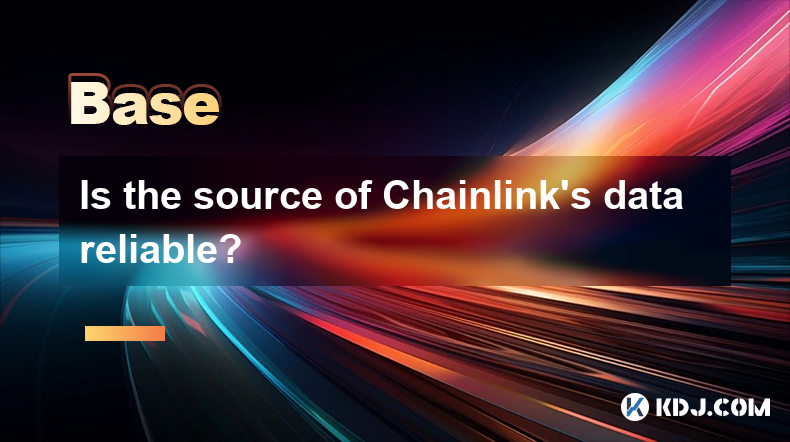
Chainlink is a decentralized oracle network that plays a crucial role in connecting smart contracts with real-world data. The reliability of Chainlink's data sources is a critical factor in determining the trustworthiness and effectiveness of the platform. In this article, we will delve into the mechanisms Chainlink uses to ensure data reliability, the types of data sources it employs, and the measures in place to maintain data integrity.
Understanding Chainlink's Oracle Network
Chainlink's oracle network is designed to fetch data from various external sources and deliver it to smart contracts on the blockchain. The network consists of multiple independent node operators who compete to provide the most accurate and reliable data. This decentralized approach helps to mitigate the risk of single points of failure and enhances the overall reliability of the data.
Types of Data Sources Used by Chainlink
Chainlink utilizes a diverse range of data sources to ensure comprehensive and accurate data feeds. These sources include:
- APIs: Chainlink integrates with various APIs to fetch real-time data from different sectors such as finance, weather, and sports.
- Traditional Data Providers: Partnerships with established data providers like Reuters and Bloomberg ensure access to high-quality, verified data.
- Decentralized Data Sources: Chainlink also leverages decentralized data sources, such as those provided by other blockchain networks, to enhance data reliability and security.
Ensuring Data Reliability Through Decentralization
One of the key mechanisms Chainlink uses to ensure data reliability is decentralization. By having multiple node operators independently source and verify data, Chainlink reduces the risk of data manipulation and errors. This decentralized approach also helps to prevent any single entity from controlling the data flow, thereby enhancing the overall trustworthiness of the data.
Data Aggregation and Consensus Mechanisms
Chainlink employs sophisticated data aggregation and consensus mechanisms to further enhance data reliability. When multiple node operators provide data for a particular query, Chainlink uses algorithms to aggregate this data and reach a consensus on the most accurate value. This process involves:
- Data Validation: Each piece of data is validated against predefined criteria to ensure its accuracy and relevance.
- Reputation Systems: Node operators are rated based on their performance and reliability, influencing the weight of their data in the consensus process.
- Penalties for Malicious Behavior: Node operators found to be providing inaccurate or manipulated data can face penalties, including loss of reputation and financial penalties.
Security Measures to Protect Data Integrity
Chainlink implements several security measures to protect the integrity of the data it provides to smart contracts. These measures include:
- Encryption: Data transmitted between nodes and smart contracts is encrypted to prevent unauthorized access and tampering.
- Secure Enclaves: Chainlink uses secure enclaves, such as Intel SGX, to protect sensitive data and computations from external interference.
- Regular Audits: The platform undergoes regular security audits to identify and address potential vulnerabilities, ensuring the ongoing reliability of its data sources.
Real-World Applications and Case Studies
Chainlink's reliable data sources have been utilized in various real-world applications, demonstrating their effectiveness and trustworthiness. Some notable examples include:
- DeFi Platforms: Chainlink's price feeds are used by decentralized finance (DeFi) platforms to provide accurate and up-to-date market data for lending, borrowing, and trading activities.
- Insurance Smart Contracts: Insurance companies use Chainlink to fetch real-time data on weather conditions, flight statuses, and other variables to automate claim processing and payouts.
- Supply Chain Management: Chainlink's data feeds help to track and verify the movement of goods in supply chains, ensuring transparency and accountability.
Challenges and Future Developments
Despite its robust mechanisms for ensuring data reliability, Chainlink faces certain challenges and continues to evolve to address them. Some of these challenges include:
- Scalability: As the demand for Chainlink's services grows, ensuring the scalability of its oracle network remains a priority.
- Interoperability: Enhancing the interoperability of Chainlink with different blockchain networks and data sources is crucial for its continued growth and adoption.
- Regulatory Compliance: Navigating the complex regulatory landscape surrounding data usage and privacy is an ongoing challenge for Chainlink.
To address these challenges, Chainlink is actively working on several initiatives, including:
- Layer 2 Solutions: Implementing layer 2 scaling solutions to enhance the performance and efficiency of its oracle network.
- Cross-Chain Interoperability: Developing protocols and standards to facilitate seamless data exchange between different blockchain networks.
- Privacy-Preserving Technologies: Exploring new technologies to enhance data privacy and compliance with regulatory requirements.
Community and Developer Engagement
Chainlink's commitment to data reliability is further reinforced by its active engagement with the community and developers. The platform encourages participation through:
- Grants and Incentives: Chainlink offers grants and incentives to developers and researchers working on projects that enhance its oracle network and data reliability.
- Hackathons and Competitions: Regular hackathons and competitions foster innovation and collaboration within the Chainlink ecosystem.
- Open-Source Development: Chainlink's open-source approach allows developers to contribute to and audit its codebase, ensuring transparency and security.
Conclusion
The reliability of Chainlink's data sources is a cornerstone of its value proposition as a decentralized oracle network. Through a combination of decentralization, sophisticated data aggregation and consensus mechanisms, and robust security measures, Chainlink ensures the accuracy and integrity of the data it provides to smart contracts. As the platform continues to evolve and address challenges, its commitment to data reliability remains unwavering, making it a trusted choice for a wide range of blockchain applications.
Frequently Asked Questions
Q: How does Chainlink ensure the reliability of its data sources?
A: Chainlink ensures data reliability through a decentralized network of node operators, sophisticated data aggregation and consensus mechanisms, and robust security measures such as encryption and secure enclaves.
Q: What types of data sources does Chainlink use?
A: Chainlink uses a diverse range of data sources, including APIs, traditional data providers like Reuters and Bloomberg, and decentralized data sources from other blockchain networks.
Q: How does Chainlink protect the integrity of its data?
A: Chainlink protects data integrity through encryption, the use of secure enclaves, and regular security audits to identify and address potential vulnerabilities.
Q: Can you provide examples of real-world applications using Chainlink's data?
A: Yes, Chainlink's data is used in DeFi platforms for price feeds, insurance smart contracts for automating claim processing, and supply chain management for tracking and verifying goods movement.
Q: What challenges does Chainlink face in ensuring data reliability?
A: Chainlink faces challenges related to scalability, interoperability with different blockchain networks, and regulatory compliance. The platform is actively working on solutions to address these challenges.
Q: How does Chainlink engage with its community and developers?
A: Chainlink engages with its community and developers through grants and incentives, hackathons and competitions, and an open-source development approach that encourages participation and transparency.
Disclaimer:info@kdj.com
The information provided is not trading advice. kdj.com does not assume any responsibility for any investments made based on the information provided in this article. Cryptocurrencies are highly volatile and it is highly recommended that you invest with caution after thorough research!
If you believe that the content used on this website infringes your copyright, please contact us immediately (info@kdj.com) and we will delete it promptly.
- Hamster Kombat GameDev Heroes Daily Cipher Codes And Combo Cards Today April 3, 2025
- 2025-04-05 07:30:12
- Exploring the Relationship Between XRP Price and the Efficiency of XRP Transactions
- 2025-04-05 07:30:12
- US Government Imposes Reciprocal Tariffs on China, the UK and South Korea, Affecting the Entire Global Market
- 2025-04-05 07:25:12
- XRP Price Analysis: Recent 0.80% Drop Shows Sellers Have Taken Control
- 2025-04-05 07:25:12
- VanEck Registers Binance Coin (BNB) Exchange-Traded Fund in Delaware
- 2025-04-05 07:20:12
- Cardano (ADA) Has Taken a Decisive Step in Its Evolution by Obtaining a New Listing on Coinbase
- 2025-04-05 07:20:12
Related knowledge

Why is the oracle called the bridge between blockchain and the real world?
Apr 04,2025 at 04:00am
The concept of an oracle in the cryptocurrency and blockchain world is crucial for understanding how these decentralized systems interact with external data. The oracle is often referred to as the bridge between blockchain and the real world because it serves as a vital intermediary that fetches, verifies, and transmits off-chain data to the on-chain en...
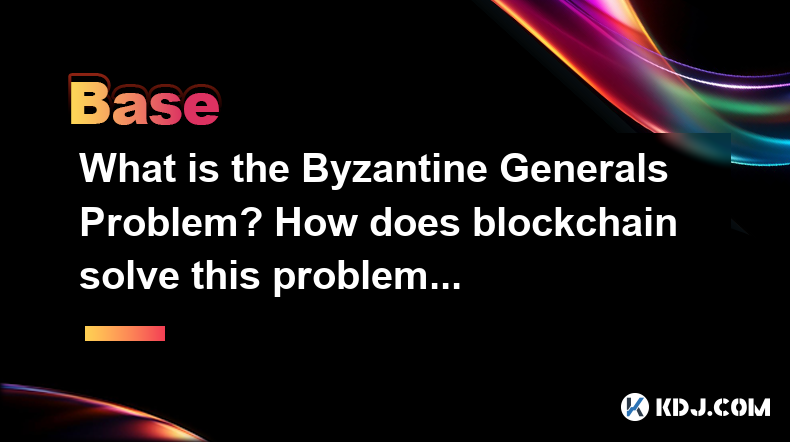
What is the Byzantine Generals Problem? How does blockchain solve this problem?
Apr 05,2025 at 06:29am
The Byzantine Generals Problem is a classic problem in the field of distributed computing and computer science, which has significant implications for the reliability and security of decentralized systems, including blockchain technology. This problem is named after a hypothetical scenario involving several generals of the Byzantine army who must coordi...

What role does the Merkle tree play in the blockchain? Why can it verify data integrity?
Apr 04,2025 at 01:29pm
The Merkle tree plays a crucial role in the blockchain, primarily due to its ability to efficiently and securely verify data integrity. This article will delve into the structure of a Merkle tree, its implementation in blockchain, and how it ensures the integrity of data. Understanding the Structure of a Merkle TreeA Merkle tree, also known as a hash tr...
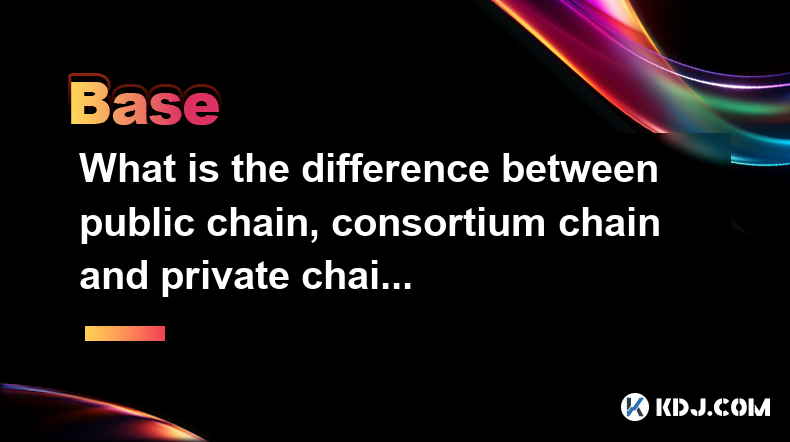
What is the difference between public chain, consortium chain and private chain? What scenarios are suitable for each?
Apr 04,2025 at 09:21pm
In the world of blockchain technology, understanding the differences between public chains, consortium chains, and private chains is crucial for selecting the right type of blockchain for specific applications. Each type of blockchain has its own unique characteristics and use cases, which we will explore in detail. Understanding Public ChainsPublic cha...
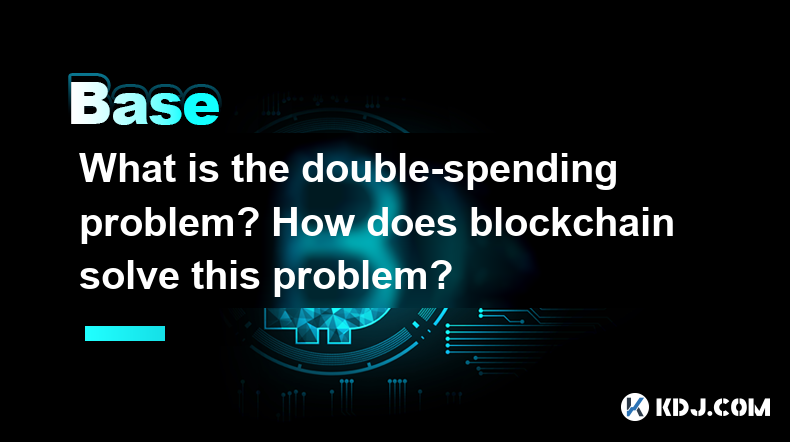
What is the double-spending problem? How does blockchain solve this problem?
Apr 04,2025 at 09:07am
The double-spending problem is a significant challenge in the realm of digital currencies. Double-spending refers to the potential for a digital currency to be spent more than once. This issue arises because digital files, unlike physical cash, can be easily duplicated. If not addressed, double-spending could undermine the integrity and trust in any dig...
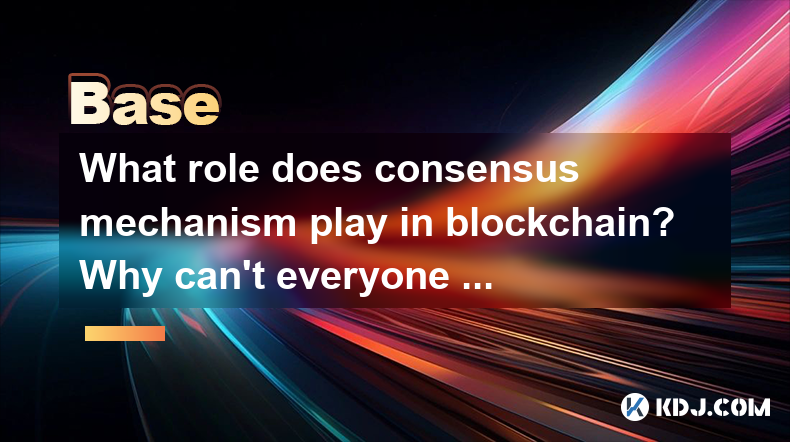
What role does consensus mechanism play in blockchain? Why can't everyone keep accounts?
Apr 05,2025 at 12:29am
The consensus mechanism is a fundamental component of blockchain technology, serving as the backbone for maintaining the integrity and security of the network. It ensures that all participants in the network agree on the state of the ledger, which is crucial for the decentralized nature of blockchain. Without a consensus mechanism, the decentralized sys...

Why is the oracle called the bridge between blockchain and the real world?
Apr 04,2025 at 04:00am
The concept of an oracle in the cryptocurrency and blockchain world is crucial for understanding how these decentralized systems interact with external data. The oracle is often referred to as the bridge between blockchain and the real world because it serves as a vital intermediary that fetches, verifies, and transmits off-chain data to the on-chain en...

What is the Byzantine Generals Problem? How does blockchain solve this problem?
Apr 05,2025 at 06:29am
The Byzantine Generals Problem is a classic problem in the field of distributed computing and computer science, which has significant implications for the reliability and security of decentralized systems, including blockchain technology. This problem is named after a hypothetical scenario involving several generals of the Byzantine army who must coordi...

What role does the Merkle tree play in the blockchain? Why can it verify data integrity?
Apr 04,2025 at 01:29pm
The Merkle tree plays a crucial role in the blockchain, primarily due to its ability to efficiently and securely verify data integrity. This article will delve into the structure of a Merkle tree, its implementation in blockchain, and how it ensures the integrity of data. Understanding the Structure of a Merkle TreeA Merkle tree, also known as a hash tr...

What is the difference between public chain, consortium chain and private chain? What scenarios are suitable for each?
Apr 04,2025 at 09:21pm
In the world of blockchain technology, understanding the differences between public chains, consortium chains, and private chains is crucial for selecting the right type of blockchain for specific applications. Each type of blockchain has its own unique characteristics and use cases, which we will explore in detail. Understanding Public ChainsPublic cha...

What is the double-spending problem? How does blockchain solve this problem?
Apr 04,2025 at 09:07am
The double-spending problem is a significant challenge in the realm of digital currencies. Double-spending refers to the potential for a digital currency to be spent more than once. This issue arises because digital files, unlike physical cash, can be easily duplicated. If not addressed, double-spending could undermine the integrity and trust in any dig...

What role does consensus mechanism play in blockchain? Why can't everyone keep accounts?
Apr 05,2025 at 12:29am
The consensus mechanism is a fundamental component of blockchain technology, serving as the backbone for maintaining the integrity and security of the network. It ensures that all participants in the network agree on the state of the ledger, which is crucial for the decentralized nature of blockchain. Without a consensus mechanism, the decentralized sys...
See all articles





















































































